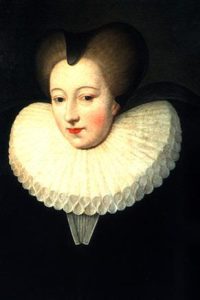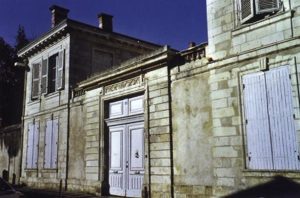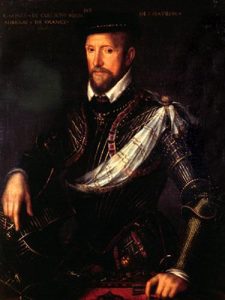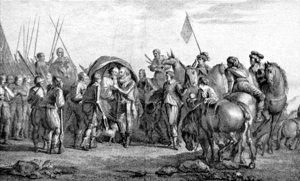Her youth
Catherine was the heiress to the rich Huguenot Parthenay-Levêque family that originated from the Poitou region. Her tutor, Francois Viete, was the greatest mathematician of his time.
At a very early age, she married Charles de Quelennec, the baron of Pont-l’Abbé, who died during the night of the Saint Bartholomew massacre while defending Coligny.
A widow at eighteen years old, Catherine was a good match and was considered as one of the most intelligent women of her time. She was courted by René, the youngest son in the Rohan family but Catherine, beautiful as she was, did not accept to marry him until he became the viscount of Rohan and subsequently inherited the fortune of the Rohan family after the death of his eldest brother.
The viscountess of Rohan
Having become the viscountess of Rohan, Catherine disposed of the main residences of the Rohan family in Brittany : Blain, Josselin and Pontivy and contributed to he extension of protestant churches in these places.
Her new husband took up arms as soon as the wars resumed. Catherine and her children found a safe haven in La Rochelle.
In 1586, she was widowed a second time ; from then on, she dedicated her life to the upbringing of her children and the support of the Protestant cause in Brittany. In her Parc Soubise and Blain residences, Catherine was the soul of a thriving political, religious and cultural life. She liked to write, and ventured into poetry and tragedy.
The siege of La Rochelle
As a staunch Huguenot, she mesmerised the defenders of the city of La Rochelle against the armies of Cardinal Richelieu.
La Rochelle surrendered in 1628. Catherine was sent to prison and the Blain and Josselin residences were pulled down.
Catherine de Parthenay lived through all the wars of religion and died in 1631 in the Parc Soubise residence. She was an active defender of the protestant cause and courageously stood for her ideas and, as such, she set an example for her sons.
Her eldest son, Henri de Royan, became the leader of the Huguenot party after Condé, Coligny and Henri of Navarre. He married Sully’s daughter. He had only one daughter who, by order of the king, was married to a Catholic prince.






